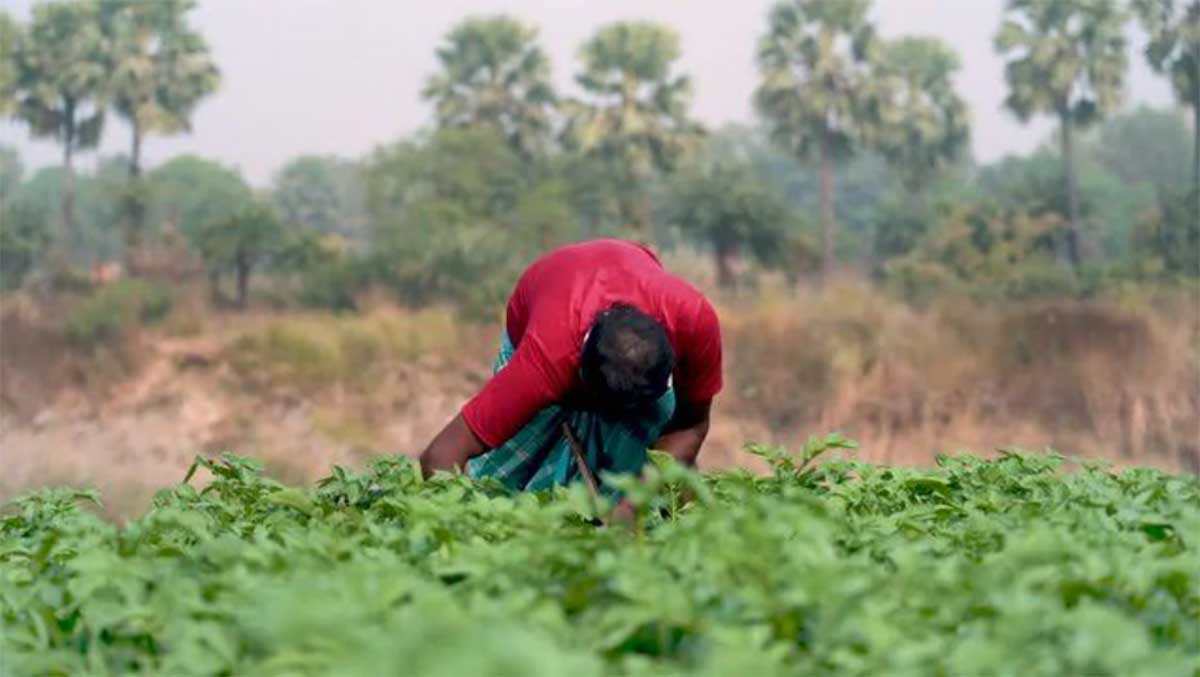Expert Expressions
Dr C.P. Rajendran is an adjunct professor at National Institute of Advanced Studies, Bengaluru, and a director of the Consortium for Sustainable Development, Connecticut, U.S
As we know, agricultural growth in India, like elsewhere in the developing world, has seen an exponential jump since the Green Revolution in the 1960s. As the data shows the hunger rates in these regions between 1970 and 2015 decreased from 33% to 12%, thanks to agricultural technologies, but with substantial environmental costs as this was conditional on the overuse of fertilisers, and over-exploitation of ground and surface water. If there is one revolutionary development that can be singled out for the increased agricultural production in the 20th century, it is the ‘Haber-Bosch’ process that was used to manufacture synthetic fertilizer from atmospheric nitrogen. However, eventually, the increased agriculture production materialised at the cost of polluting waterways due to nitrogen run-off and reduced natural fertility of the soil.
Farmers face the double whammy of rising agricultural production costs and environment-related issues, including a depletion in surface and groundwater availability. The productivity crisis has affected the progress in combating hunger and the hunger rates since the pandemic are on the rise due to multiple reasons.
The demand for food will have to increase in tandem with the increase in population, which is set to grow to over nine billion. To ensure suffice the needs of a large population, agricultural production must increase by about 70 percent by 2050. How we reach this target without a substantial environmental downside is a question that is being discussed within the academic world. Climate change is forcing human society to the brink of starvation with about 800 million going hungry, as per the UN estimates. According to the UN, climate change is a major reason for decreasing food security — increasing temperatures, irregular precipitation patterns, and more extreme weather events are making it harder for farmers to grow as much food as it used to be.
The experts put forward many strategies including the application of gene editing to develop drought and disease-resistant crops. The new breeding technology alters plants through genetic mutations or traditional breeding that sets them apart from crops that are genetically modified, which remains controversial as the technology involves the transfer or insertion of genes from another species or breeds. Experts talk about boosted plant breeding technology that uses CRISPR gene editing to allow parent plants to pass all their DNA (genome) to their offspring, instead of just half of each parent's genes, which will end up in genetic diversity. Like in human societies, genetic diversity helps plants to grow faster growth with healthier and longer lives. In India, the Swaminathan Research Foundation is developing salt-tolerant rice to help farmers who face the challenges due to sea level rise and consequent increase in soil salinity.
The Indian Context
In an article titled “Toward an Evergreen Revolution”, Meha Jain and Balwinder Singh (in Better Planet; Big Ideas for A Sustainable Future -Ed: Daniel C. Esty -Yale University Press) say that the warming temperatures and environmental degradation threaten to reduce farm productivity across the globe. They say that these problems impact the smallholder farmers of the poor countries of Asia and Latin America, the most, who produce about one-third of the global food supply. The transformative phase in agricultural production hinges on introducing sound farming practices using green technologies including high-yielding new seed varieties that respond better to environmental stresses. A transformation that combines sustainable water usage and improved soil health will help smallholders of the main grain belt of India, the Indo-Gangetic Plains, where year-long crop rotation between wheat and rice is practised. What they recommend can be bracketed as “Conservation Agriculture”, which offers “a set of soil management practices that minimize the disruption of soil structure, composition, and natural biodiversity”.
In the above-referred article, the authors recommend minimum mechanical soil disturbance and zero tillage. The zero-tillage helps develop a permanent organic soil cover with crop residues and diversifying crop rotations. This method will also help in conserving soil moisture and organic matter. This will see the end of the usage of synthetic fertilizers, and the consequent growth of microbes within the soil that can pull the atmospheric nitrogen into leaves. Zero tillage is also advantageous in cutting down the practice of stubble burning which is one of the contributors to air pollution. Zero tillage developed in the United States in the 1960s as it ameliorated soil erosion during the 1930s in the dustbowl states.
Although zero tillage was introduced in India, mainly with the help of the International Maize and Wheat Improvement Center in Australia, only less than 1 percent of farmers in India have adopted the technology, even though the newly introduced practice helped the farmers to increase wheat production by about 15%, with reduced fertiliser and water inputs. Then, why is it widely adopted by the farmers in northern India where wheat-rice crop rotation is practised? According to the article's authors, Meha Jain and Balwinder Singh, the seeder methodology was not well-adapted to the Indian conditions and cost-effective as the success of zero tillage depends on affordable machinery to drill seed in the uncultivated land. Despite government subsidies, the majority of farmers are not amenable to the purchase of new seeder machines. The zero-tillage method also needs to be well-popularized through awareness programs. Priya Shyamsunder and her colleagues discuss these aspects in detail in their article in an issue of Science (August 9, 2019) and suggest that India has a great opportunity, through “co-ordinated public and private actions, reduce burning, increase incomes, and transition to more sustainable agriculture while addressing the urgent problem of seasonal air pollution… and can provide lessons for other countries facing similar risks and problems”.

















Leave a comment